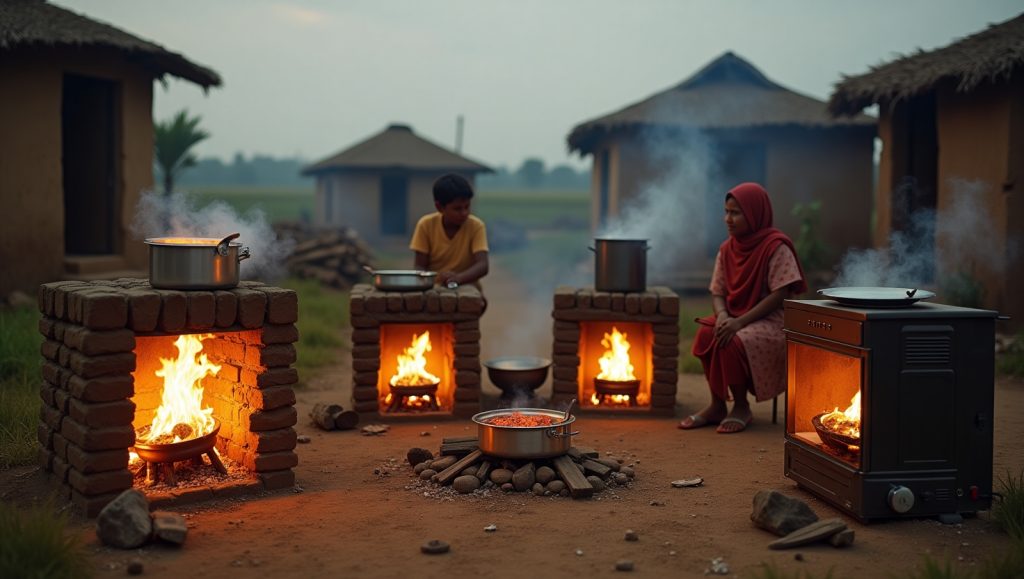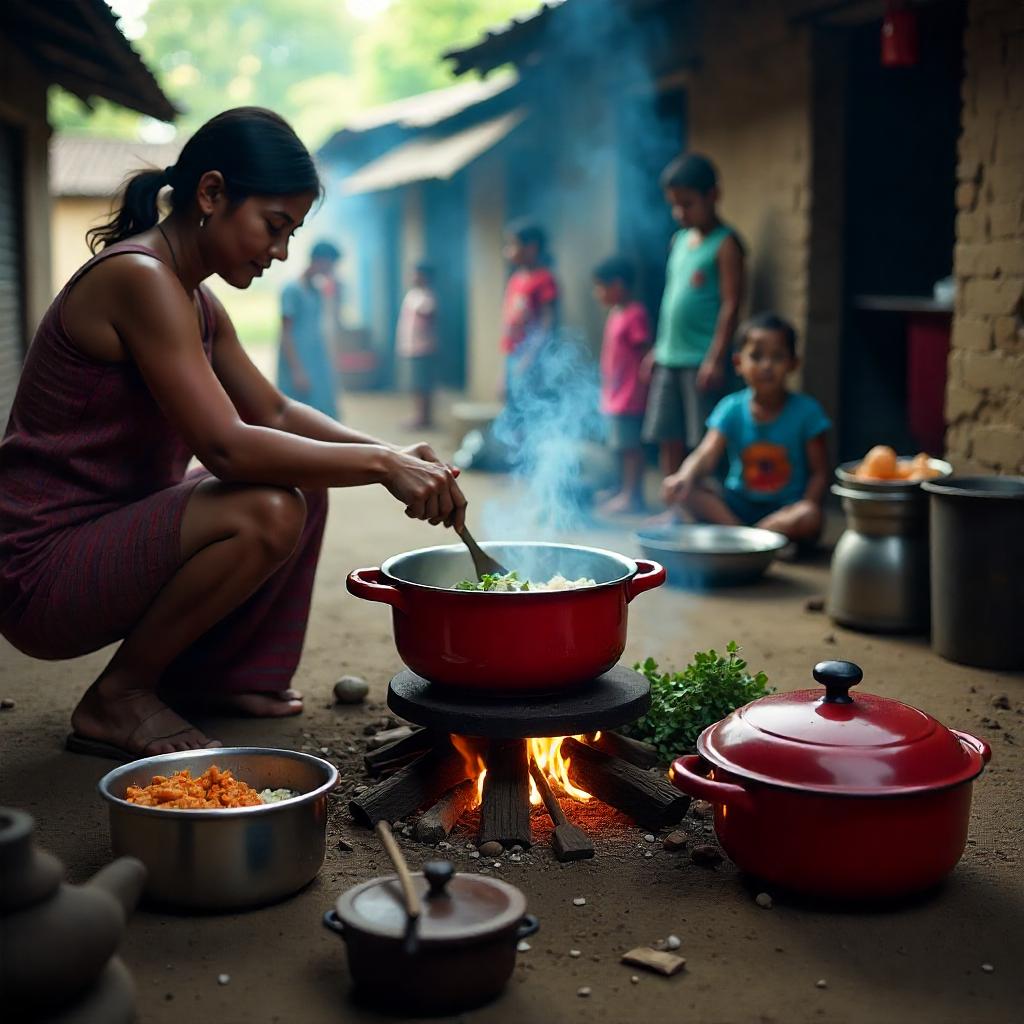cookstove: NO.1 best cookstoves | stove top kitchen pro
introduction of Cookstove Cookstove initiatives and businesses aim to realize universal adoption of high-performing technologies for the almost 3 billion individuals who use solid biomass fuels to satisfy their main household energy needs (Bonjour et al. 2013). The effects of this solid fuel use are estimated at 4 million premature deaths annually due to exposure to health-harming pollutants (Lim et al. 2012) and significant climate forcing from the estimated 25% of global black carbon emissions (Bond et al. 2013). Inefficient stove use also imposes great time and financial costs of buying and gathering fuel (Clancy et al. 2012; García-Frapolli et al. 2010). Enhancing emissions and efficiency of cookstoves to mitigate these effects has been a long concern of stove designers and programs, with several promising new technologies and fuels showing relatively good performance (Jetter et al. 2012). Improvement in cookstove emissions and fuel efficiency has been supported by recent advances in performance standards and guidelines, such as the International Organization for Standardization (ISO) International Workshop Agreement IWA 11:2012The relationships between the availability of resources, climate, habits, culture, tradition, household behavior, and preferences for cooking lead to varying stacking patterns. We observed stacking patterns of the two fuel types (woodfuel and gas) at various time scales in the study population: (a) seasonal alternation of fuels and stoves; (b) weekly alternation of stoves; and (c) simultaneous use of multiple stoves per day Tasks: Cooking is a Mix of Tasks and Techniques Each with Certain Energy Requirements and Cultural Meaning Cooking is not just about warming food. ‘victorious cookery requires a thousand things done well”, states Michael Symons in his History of Cooks and Cooking (Symons 2004). Cooking is about mixing various techniques or tasks to prepare a meal, such as heating, and boiling, among others. Each task/technique possesses distinctive and usually opposing energy requirements in terms of the type of fuel and rate, cooking times and temperatures, and also distinct demands for the type and capacity of cooking pots. However, the demands that must be satisfied to complete a cooking task cannot be deciphered through the technical descriptions. Clear evidence from various countries demonstrates that typical dishes are cooked using fuelwood regardless of the full use of modern fuels.5 This is what has been happening for roasted meat in Nicaragua (Alberts et al. 1997), tortillas in Mexico (Evans 1987; Masera et al. 2000), hard beans, stamp and sewage in Botswana (Hiemstra-van der Horst and Hovorka 2008), chapati in India (Joon et al. 2009), glutinous rice in Thailand (Nansaior et al. 2011), and reduced-cooking time stews in China (Trac 2011).Cookstove initiatives and businesses aim to realize universal adoption of high-performing technologies for the almost 3 billion individuals who use solid biomass fuels to satisfy their main household energy needs (Bonjour et al. 2013). The effects of this solid fuel use are estimated at 4 million premature deaths annually due to exposure to health Livelihood Strategies: Responding to UnpredictableVariability in Cash Incomes, Fuel Prices, and Access to Fuels Marked seasonal weather patterns, the seasonality and uncertainty in households’ cash incomes, and physical access to fuels are other variables that influence the patterns of adoption and use of clean fuel–stove combinations (Masera et al. 2000; Singh 2014). The largest share of poor households covered by stove implementations experience unpredictable and highly variable cash incomes since they are at the mercy of local crop fortunes or on informal work. Furthermore, various forms of local fuel can be found at various times (e.g., crop residues are only readily available at harvest season, whereas getting woody biofuels by going into the forest might be difficult during the rainy season). Fuel–Stove Combinations: Stacking Clusters At the population level, understanding the impacts of stacking demands expanding the ”stove” and ”no stove” groups to encompass all the combinations after the distribution. We conducted household surveys to prepare detailed list of all the fuels and stove arrangements in the 100 households to prepare a detailed list of all the fuels and stove arrangements in the sampled population and hence determine the primary stacking clusters. Types of Stacking The relationships between the availability of resources, climate, habits, culture, tradition, household behavior, and preferences for cooking lead to varying stacking patterns. We observed stacking patterns of the two fuel types (woodfuel and gas) at various time scales in the study population: (a) seasonal alternation of fuels and stoves; (b) weekly alternation of stoves; and (c) simultaneous use of multiple stoves per day. Closing Remarks Scheduling programs leading to extensive adoption of technology and eventually contributing to material ecological, health, and other social benefits among the neediest citizens of an emerging nation presents a problem, not only to clean fuel and stove programs but to rural programs about numerous other technologies, such as those geared to better housing or access to clean water and sanitation. Summary for subsequent stove dissemination projects We do not make an overall evaluation of the performance of the individual stoves here, which is a more detailed matter that was not collected as part of the IAQ and SP monitoring documented here. From these limited data, however, we do make one observation. In two of the sites, the decreases in pollution approximately equaled those in fuel consumption, though in the third, IAQ may have decreased somewhat. This may suggest that for some stoves most or all of the gains from each design came from enhancements in the heat transfer into the pots and not from increases in the combustion efficiency of the fires nor. stone fire In comparison with other stoves that were tested, the 3‐stone fire had a boiling time that was very good, but not as quick as three of the stoves. Thermal efficiency, fuel-specific consumption, and emissions were in the middle of the ranges for all cookers tested. The 3‐stone fire needed more attention to operate than any of the other wood‐fueled cookers that were tested, and it is known that VITA stove In comparison to the 3‐stone fire, the VITA stove was quicker time. With high
cookstove: NO.1 best cookstoves | stove top kitchen pro Read More »



